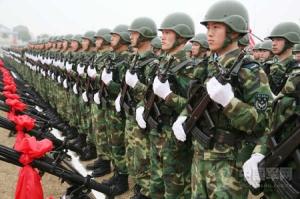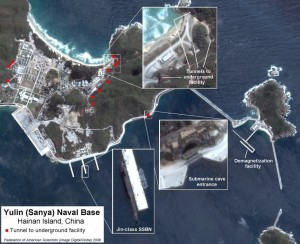
An airborne troop unit of the PLA Air Force. Image: PLA Daily
The Office of the Secretary of Defense has released its annual report to Congress on the Military Power of the People’s Republic of China. The seventy-eight page report outlines China’s quest to modernize its armed forces and improve capabilities.
Key findings in the report:
- People’s Liberation Army (PLA) is pursuing comprehensive transformation from a mass army designed for protracted wars of attrition on its territory to one capable of fighting and winning short-duration, high-intensity conflicts along its periphery against high-tech adversaries – an approach that China refers to as preparing for “local wars under conditions of informatization.”
- PLA’s modernization vis-à-vis Taiwan has continued over the past year, including its build-up of short-range missiles opposite the island. In the near-term, China’s armed forces are rapidly developing coercive capabilities for the purpose of deterring Taiwan’s pursuit of de jure independence.
- The PLA is also developing longer range capabilities that have implications beyond Taiwan. Some of these capabilities have allowed it to contribute cooperatively to the international community’s responsibilities in areas such as peacekeeping, humanitarian assistance and disaster relief, and counter-piracy.
- Over the past several years, China has begun a new phase of military development by beginning to articulate roles and missions for the PLA that go beyond China’s immediate territorial interests, but has left unclear to the international community the purposes and objectives of the PLA’s evolving doctrine and capabilities.
- Moreover, China continues to promulgate incomplete defense expenditure figures and engage in actions that appear inconsistent with its declaratory policies. The limited transparency in China’s military and security affairs poses risks to stability by creating uncertainty and increasing the potential for misunderstanding and miscalculation.
The report also mentions construction of a new People’s Liberation Army Navy base on Hainan Island. “The base appears large enough to accommodate a mix of attack and ballistic missile submarines and advanced surface combatant ships. The port, which has underground facilities, would provide the PLA Navy with direct access to vital international sea lanes, and offers the potential for stealthy deployment of submarines into the deep waters of the South China Sea.” p. 49.

Yulin (Sanya) Naval Base on Hainan Island. Image: FAS
The new base means the Chinese want to project power into the South China Sea and Indian Ocean, said Dan Blumenthal, of the American Enterprise Institute who is quoted in Stars and Stripes.
Blumenthal said the move has already made other countries in the region nervous. That includes India, which has begun upgrading its aircraft carriers in response.
Click here to read the report in its entirety.

